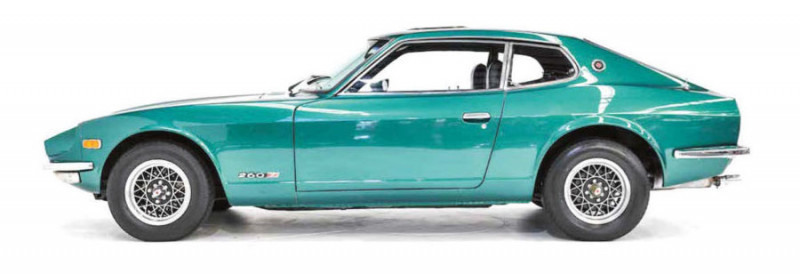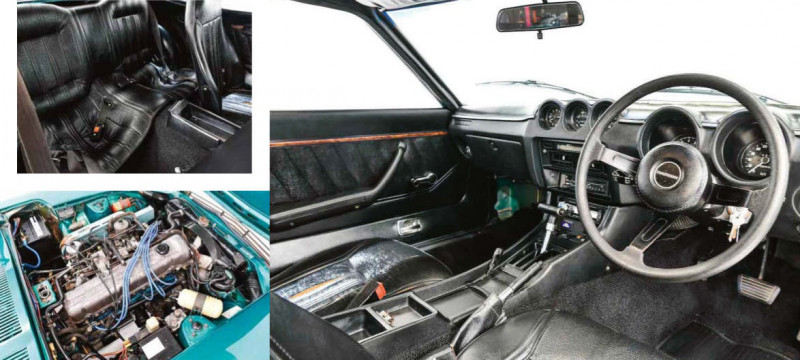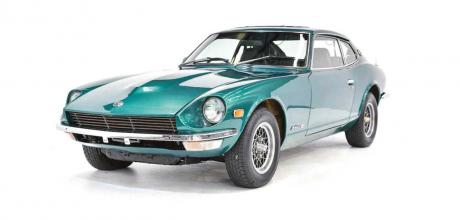1974 Datsun 240Z
Follow-up to the lithe 240Z had to face the challenge of extra ballast
Nissan recently ripped the covers off the seventh generation of its halo Z sports coupe model, oozing styling cues from the granddaddy of Z-cars, the S30 series that ran from 1969 to 1978. It could be argued that the Z family has never strayed too far from the S30 template: six-cylinder engine beneath a long bonnet, a pert coupe cabin over the driven rear wheels.

Purists like to point to the very first Z, the two-seater, 2.4-litre Datsun 240Z, which rocketed to best-selling sports car status within three years and ended Britain’s hold on affordable sportsters.
We’re here to argue that the 260Z, introduced in 1974, is the more truly representative of the breed. Because it’s where the bloat began.
Launched amid the global oil crisis and choking US emissions and safety laws, the 260Z stepped up engine capacity (from 2.4 to 2.6 litres), though the two-seater proved to be no quicker than the 240Z it replaced. More significant was the addition of a cushier, two-plus-two seater version. Both body styles were sold in Australia, but as with the following two or three Z generations, two-seaters are rarely seen.

Inspired by Jaguar’s stretch of the E-Type coupe (the E had inspired the Z from the start), Nissan stitched an additional 30cm into the wheelbase and raised the rear roofline. The latter gave at least some extra headroom for the kiddiesized rear seats, each of which was drooped between the transmission tunnel and a wheelarch.
The bigger body added in the region of 150kg, bumping the 260Z to 1185kg, and despite a quicker steering ratio than the wandery 240Z’s, not much else was quicker: the weight gain and moonshot gearing, with a massively overdriven fifth, resigned this Z to a grand touring role.
What followed, the 280ZX of 1978, simply sealed the theme: a light, pure sports car brims with appeal, attracts youth-seeking older and wealthier owners (particularly in the vital US market), begins to make concessions like extra seating, ride comfort, interior equipment … and within a couple of generations, is a cellulitic send-up of itself. I’d argue that, despite various turbo and two-seater versions, it’s never really recovered.
Nissan’s SR30 production figures, listed by years rather than model variations, suggest a total 260Z production of around 300,000.
QUALITY DODGE
The 260Z 2+2, like the 1975 model pictured, shows its bigger body in the too-long doors and flatter roofline. Rear windows hinged open, but the seating was marginal and bolt-upright. Folding rear backrest and hatchback rear provided some grand touring versatility. The interior equipment list was excellent – a standard radio and intermittent wipers were noteworthy in 1974 – but sadly the plastics were awful and the sheetmetal turned out to be no better.
TALL DIFF TALES
The 260Z used a mildly warmed-over, twin-carb version of the 2565cc sohc, in-line six fitted to the contemporary 260C sedan. In Z guise it made 119kW at 5600rpm and 205Nm at 4400rpm, though the latter understated the fairly truck-like torque. It drove through a long-legged five-speed manual or a dreary, three-speed slusher, shared with Ford and Mazda. Manuals got from 0-100km/h in around 12 seconds, hamstrung by the tall diff.
Dollars new in Oz
(vs $6113 for a Falcon XB GT 351 hardtop)
Thousand dollars; 2018
sale price of green 1975
model pictured 7710
260Z wins US SCCA C Production and IMSA GT/U championships approximate number built (with driver Walt Maas)


